- News
- Reviews
- Bikes
- Accessories
- Accessories - misc
- Computer mounts
- Bags
- Bar ends
- Bike bags & cases
- Bottle cages
- Bottles
- Cameras
- Car racks
- Child seats
- Computers
- Glasses
- GPS units
- Helmets
- Lights - front
- Lights - rear
- Lights - sets
- Locks
- Mirrors
- Mudguards
- Racks
- Pumps & CO2 inflators
- Puncture kits
- Reflectives
- Smart watches
- Stands and racks
- Trailers
- Clothing
- Components
- Bar tape & grips
- Bottom brackets
- Brake & gear cables
- Brake & STI levers
- Brake pads & spares
- Brakes
- Cassettes & freewheels
- Chains
- Chainsets & chainrings
- Derailleurs - front
- Derailleurs - rear
- Forks
- Gear levers & shifters
- Groupsets
- Handlebars & extensions
- Headsets
- Hubs
- Inner tubes
- Pedals
- Quick releases & skewers
- Saddles
- Seatposts
- Stems
- Wheels
- Tyres
- Health, fitness and nutrition
- Tools and workshop
- Miscellaneous
- Tubeless valves
- Buyers Guides
- Features
- Forum
- Recommends
- Podcast
review
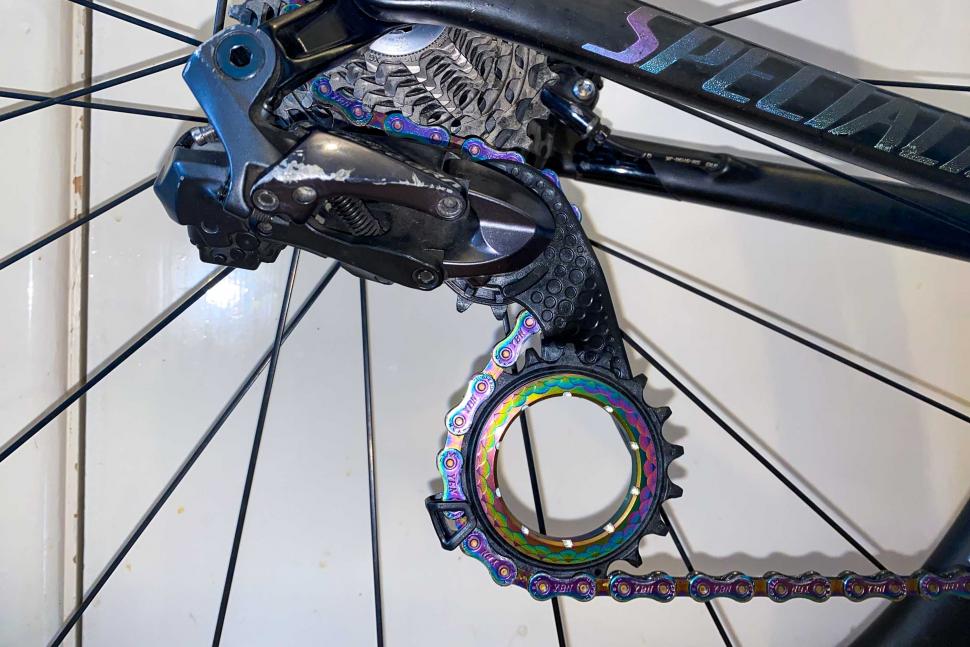 2021 Absolute Black Hollowcage Carbon Ceramic Oversized Derailleur Pulley Cage - on bike 3.jpg
2021 Absolute Black Hollowcage Carbon Ceramic Oversized Derailleur Pulley Cage - on bike 3.jpg£519.00
VERDICT:
Very expensive, very quiet, very controversial
Reduces drivetrain noise
An instant conversation starter
Only fits Shimano SS derailleurs
Price
Weight:
70g
Contact:
At road.cc every product is thoroughly tested for as long as it takes to get a proper insight into how well it works. Our reviewers are experienced cyclists that we trust to be objective. While we strive to ensure that opinions expressed are backed up by facts, reviews are by their nature an informed opinion, not a definitive verdict. We don't intentionally try to break anything (except locks) but we do try to look for weak points in any design. The overall score is not just an average of the other scores: it reflects both a product's function and value – with value determined by how a product compares with items of similar spec, quality, and price.
What the road.cc scores meanGood scores are more common than bad, because fortunately good products are more common than bad.
- Exceptional
- Excellent
- Very Good
- Good
- Quite good
- Average
- Not so good
- Poor
- Bad
- Appalling
The Absolute Black Hollowcage Carbon Ceramic Oversized Derailleur Pulley Cage has a price tag about as big as its name. The £519 upgrade is unlikely to make you beat your mates to the café, but neither is it going to slow you down, and when you get there just about everyone is going to want to talk to you about it (from experience). The cage meets its claims to reduce drivetrain noise which on slow climbs does make standard setups sound rather rudimentary, and shifting with it fitted was crisp and precise, but my word that price is quite something.
The Absolute Black Hollowcage has created quite the stir since its release, for reasons both good and bad. For a few days it seemed like every other picture on Instagram was of the unique pulley cage, with most people clearly liking its looks at the very least. Then there's the price, £519, enough dosh to buy a bike with; but people have proven that there's a market for ludicrously expensive oversize pulley wheels (OSPWs), as CeramicSpeed has had no problem in shifting its £379.99 systems – so much so that you're more likely to be unique if you turn up with a standard derailleur cage at the rich boys' café run.
Then there's the accompanying marketing material, which doesn't exactly beat around the bush:
- It is super silent (over 12dB noise reduction vs stock).
- The shifting is as good as with the original Dura Ace cage.
- It's more aero than the OEM cage and other oversized cages.
- It saves more watts than other cages
- One of the lightest oversized cages on the market.
- First mono plate construction of its kind.
These have raised their own questions and a certain Youtube video which you now can't watch in the UK. So, after six weeks with the cage, let's take a look at what I've found.
Firstly, I think it looks great. The one we've got is the rainbow PVD colour but there's also red, gold, black and titanium available. It looks different to any other cage on the market and because of that has garnered more attention during rides than just about anything else I've tested.
At the moment the cage is only available for Shimano and is compatible with its 8000 Ultegra and 9100 Dura Ace SS derailleaurs.
Fitting the cage is pretty simple: you will need to remove the chain, use a Torx T10 key to remove the bolt holding in the existing cage, twist and remove that one, and then repeat the process in reverse to fit the Hollowcage. I found the instruction video on the Absolute Black website extremely informative and easy to follow, and I wish more brands would follow suit with similar installation and maintenance help.
Next, you're required to size your chain. This should be similar to the one taken off, and this is where I hit a problem.
In big/big gears the rear mech was at its extremity, with very little chain wrap, and yet in small/small or pretty much any gear in the little ring in fact, the chain was baggy. I was stumped by this for some time, having followed the chain length video to a T. I decided to try the cage in the other two spring tension settings, but to no avail. I finally gave up and emailed customer support, and following some very polite and punctual responses it turns out my 'medium' cage (GS) derailleur was incompatible. On AB's website it is stated that the Hollowcage is 'NOT compatible with Ultegra long GS cage derailleurs.' I'd got caught out by assuming that the medium would be fine... Turns out that on the Shimano website there isn't a long one, so this is going to limit the number of people who can use the Hollowcage quite dramatically.
Anyway, happily I refitted the cage to an SS rear mech and the chain sizing went far more successfully.
Quietly does it
Once on, I spun the pedals, re-indexed my gears and was seriously impressed with just how quiet it was. Pulling out a decibel meter, I measured a reduction of 15dB compared to standard (two-week-old) Dura-Ace jockey wheels, which is not insignificant. Out on the road, this is completely irrelevant when travelling at over about 25kph as wind noise is far more prevalent. However, when travelling slower on climbs, especially on a still day, you can make progress with eerily little noise. I've never really thought of a standard drivetrain as being noisy, but you do generally hear if someone's on your wheel, and swapping between bikes during testing did highlight just how clanky even a 'quiet' drivetrain can sound.
So, the first claim seems absolutely true. Apparently, this is due to the 'xring rubber suspended bands, that dampen the chain impact on the guide pulley teeth'. All I know is I liked sneaking up on riding buddies.
Slick shifting
The second claim is that shifting is as good as when using the original Dura-Ace cage. This is a big one as the top-of-the-range Shimano groupset is famous for its crisp, direct shifting; I believe this could be the main reason we haven't seen the whole pro peloton adopt OSPW systems yet, although some teams such as Astana Premier Tech were using them at Grand Tours this season. After 1,000km with the cage, I must say it impressed; it requires less b-screw than a CeramicSpeed alternative fitted to the same mech, resulting in more accurate and reliable shifting.
Is it as good as Dura-Ace? In a blindfolded test I'm pretty sure I couldn't tell the difference between the two, so I'll give it the benefit of the doubt.
More aero?
Claim number three: It's more aero than the OEM cage and other oversized cages. Hmmm... well, to back this up Absolute Black has published some results and a video on its website, and firstly I'd like to say that if I published a graph like that, I don't think I'd have passed my aerospace degree. However, what it does show is that IF a completely laminar flow hits the cage while it's in THAT particular position, then it outperforms its competition.
> How to get more aero without spending a fortune
Is this comprehensive proof that it's more aero? No, I don't think it is. For a start, your legs are going up and down and around in front of it, meaning the flow of air hitting the cage will be all over the place – technical term there, I know. A wheel is spinning extremely quickly next to it, causing further disruption, and also, as AB's own graph points out, the differences are in the 0.1s of a watt. Now, I am all for a marginal gain, but I am completely of the mindset that this microscopic amount of difference has no meaningful effect on even the quickest of riders, and in an attempt to show that larger cages aren't slower AB has shot itself in the foot, rather. Conclusion – don't buy it because it's more aero, don't not buy it because it's less aero.
Watt-saving
Claim number four: It saves more watts than other cages. Well, there are no numbers mentioned but once again we're treated to a graph. This one shows that the 'special grease' is nearly as quick as oiled or dry bearings, coming in with just 0.04W in real-life conditions under load. I assumed this was GraphenLube because that's what it says to top it up with during services, but AB says that it is a proprietary petroleum-based grease. It's impressive, but as AB says itself, 'Bearings, contrary to common assumption, are not the place of big savings (0.03-0.1W between high-quality bearings).' So let's move on.
They don't spin freely... this is not something I have a problem with – heavy aluminium jockey wheels have far more inertia to keep them spinning, so some light plastic ones are never going to spin for as long. Friction under load and at different chain line angles is far more important, I can agree with AB on that one. So, is that big bearing actually any better? I highly doubt it; in a bigger bearing the balls/races move over each other far faster than in a small bearing, but as it makes a negligible difference when they're spinning so slowly when compared to an industrial machine, who cares? Maybe they are 0.1W slower, maybe they're 0.1W faster, which in my mind can be sacrificed in the name of aesthetics and design.
Sticking with claim number 4 a bit longer, I was under the impression that OSPW systems save watts by reducing the radius that the chain has to go through around the jockeys. In part this is true, but only really significant when the chain is under tension, that's as it enters the chainring and exits the cassette. So larger jockey wheels don't really do anything other than look pretty and maybe facilitate a little less chain tension (which would reduce the friction from the chain a tiny amount).
Having tried the cage in its lowest chain tension setting, I found the chain slapping when in small/small gears offputting and feared dropping a chain. Hence, I opted to use the cage in its medium-chain tension position, solving the chain slap but also most likely negating any tiny watt savings I was getting over a standard cage. Since THAT Youtube foray, I've been sent a video by AB detailing its testing procedure. It certainly looks thorough and as if it should get reliable results. I'm therefore of the opinion that yes, the cage can save more watts than other cages, but when in its lowest chain tension position. On real-life roads I found it impractical to run it in this position, but for smooth TTs you could probably take advantage of it, though actually we're talking about numbers so small that there are far better and far more cost-effective ways of 'buying speed'.
Low weight
Claim five: One of the lightest oversized cages on the market – we're almost there! The Hollowcage has a claimed weight of 71g and came up as 70g on our scales; that's certainly light, but you're not likely to save a lot, if anything. According to CeramicSpeed its system 'weighs approx. 70g, making the difference between a standard rear derailleur pulley system and the CeramicSpeed OSPW System negligible'.
Unique design
Claim six: First mono plate construction of its kind. At least it's an easy one to finish... YES, I haven't seen any other derailleur cages like it.
Conclusion
As with any oversized pulley wheel system, I don't think you should buy it for aero reasons, weight or a reduction in drivetrain watts. There are loads of better ways to gain speed, however good you are, without spending this much. If, however, you're buying it to personalise your bike, stand out from the crowd or simply because it makes you happy, then rest assured that just about all of us have spent money on needlessly expensive upgrades and this one is bound to garner plenty of interest.
Regardless of whether you believe me, people on Youtube or Absolute Black, I think we can all agree that it's not going to significantly slow you down. In my experience the shifting has been more than adequate, and personally I think it looks bang tidy.
Verdict
Very expensive, very quiet, very controversial
road.cc test report
Make and model: Absolute Black Hollowcage Carbon Ceramic Oversized Derailleur Pulley Cage
Size tested: 9100/8000
Tell us what the product is for and who it's aimed at. What do the manufacturers say about it? How does that compare to your own feelings about it?
Absolute Black says: "Our revolutionary mono-plate OSPW design is the quietest, best shifting, aerodynamic derailleur cage design created to date. It is a dawn of new era for rear derailleurs." It's certainly unique, is very quiet, has excellent shifting attributes and the aero claims are fairly insignificant in the grand scheme of things. At £519 it's for riders with money to spend on blinging out their bikes and looking for a conversation starter.
Tell us some more about the technical aspects of the product?
From Absolute Black:
Size (Mass +/-1g):71g
Color: Lower lockring: PVD Rainbow, Black, Titanium, Red, Gold
Compatibility:Shimano Dura Ace 9100 / 9150 / 9170 , Ultegra 8000 / 8050. Fits up to 32T cassette. NOT compatible with Ultegra long GS cage derailleurs..
Materials used: Carbon fiber-polymer matrix, 7075 Aluminium, rubber, ceramics
In the box: Complete cage, lockring tool, 2x spare xring rubbers
Rate the product for quality of construction:
8/10
Rate the product for performance:
8/10
Shifting performance is good, noise is reduced, and I don't think it's any slower than a standard setup and certainly no less aero.
Rate the product for durability:
8/10
No issues after 1,000km. The fully ceramic bearing is an unknown but has a four-year warranty for peace of mind. Maintenance of bearings has been considered and a tool included in the box.
Rate the product for weight (if applicable)
8/10
A competitive weight, very similar to a standard Shimano Dura-Ace cage or CeramicSpeed OSPW system.
Rate the product for value:
3/10
It's over £100 more than the CeramicSpeed option...
Tell us how the product performed overall when used for its designed purpose
It performed well; shifting performance was a pleasant surprise, drivetrain noise reduction claims were true.
Tell us what you particularly liked about the product
I like its looks and the reduction in drivetrain noise.
Tell us what you particularly disliked about the product
I think it could have been clearer that this would not work with MEDIUM cage derailleurs. The "long" next to the GS on the website is misleading as Shimano does not appear to use this same nomenclature. Not a problem if you have a Dura-Ace mech, as they are all SS.
How does the price compare to that of similar products in the market, including ones recently tested on road.cc?
It's expensive but OSPWs always seem to be. The CeramicSpeed OSPW is the obvious competitor and that's got an RRP of £379.99.
Did you enjoy using the product? Yes
Would you consider buying the product? No
Would you recommend the product to a friend? A very rich one.
Use this box to explain your overall score
It's hard to score! It worked well, shifting was precise and the drivetrain noise reduction claims were real. However, at that price it doesn't offer any significant performance benefit and hence becomes a bit of a fashion accessory. I personally love that Absolute Black has created something that looks different to anything else on the market without hindering performance.
About the tester
Age: 23
I usually ride: Specialized venge pro 2019 My best bike is:
I've been riding for: Under 5 years I ride: Every day I would class myself as: Expert
I regularly do the following types of riding: road racing, time trialling, cyclo cross, commuting, club rides, sportives, general fitness riding, mtb,
Jamie has been riding bikes since a tender age but really caught the bug for racing and reviewing whilst studying towards a master's in Mechanical engineering at Swansea University. Having graduated, he decided he really quite liked working with bikes and is now a full-time addition to the road.cc team. When not writing about tech news or working on the Youtube channel, you can still find him racing local crits trying to cling on to his cat 2 licence...and missing every break going...
Latest Comments
- ooblyboo 33 min 29 sec ago
I don't care what the offer is, TNT aren't having my money.
- matthewn5 1 hour 10 min ago
A club member had just had his 12 speed Shimano Hollowtech cranks fail... same way that the 11 speed cranks failed.
- MattieKempy 1 hour 25 min ago
Currently watching the Cyclocross Worlds on www.Sporza.be using my vpn, which I have anyway, free through my bank account. OK, so it's in Dutch,...
- chrisonabike 1 hour 55 min ago
EDIT - Cycle Happy got there first!...
- rickiecheese 2 hours 56 min ago
An update regarding this path....
- tony.westclassics@live.co.uk 3 hours 57 min ago
Theres no boubt about it, this bloke is the kiss of death
- don simon fbpe 4 hours 11 min ago
As you agree with me, I don't understand your point.
- Rendel Harris 4 hours 15 min ago
Absolutely without a doubt, a small example recently: I was cycling down The Mall in London from Buckingham Palace towards Admiralty Arch and...
- Rendel Harris 4 hours 49 min ago
The jacket looks funky but as far as I can see from the photographs isn't anything like as bright when hit by light as ProViz or similar more...
- cardch 5 hours 54 min ago
Just ordered mine. Went to visit them and it's a great setup, and so nice (I hope) to get something with a bit of soul, rather than another...















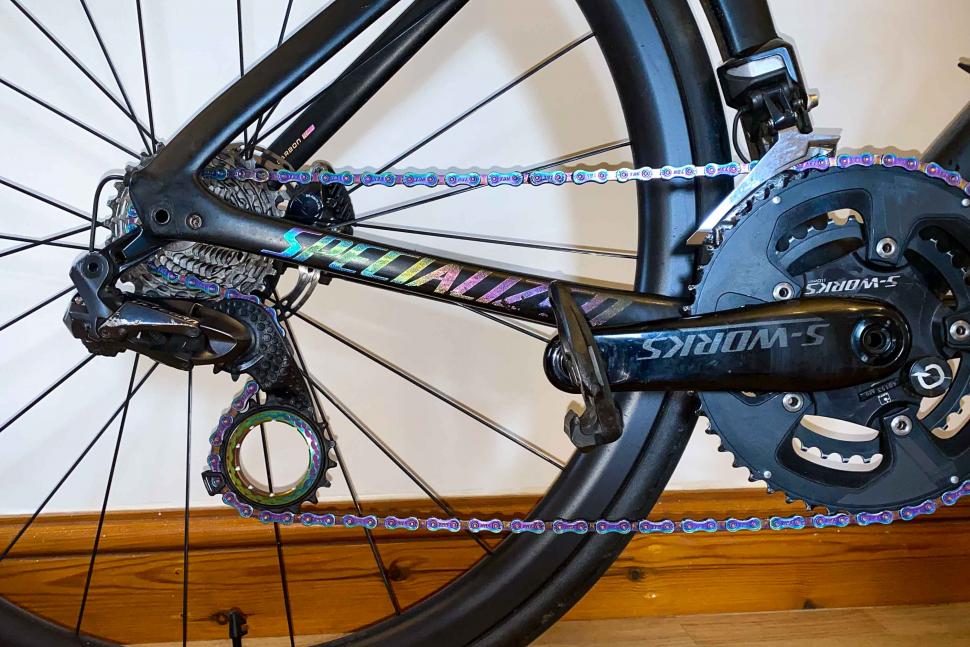
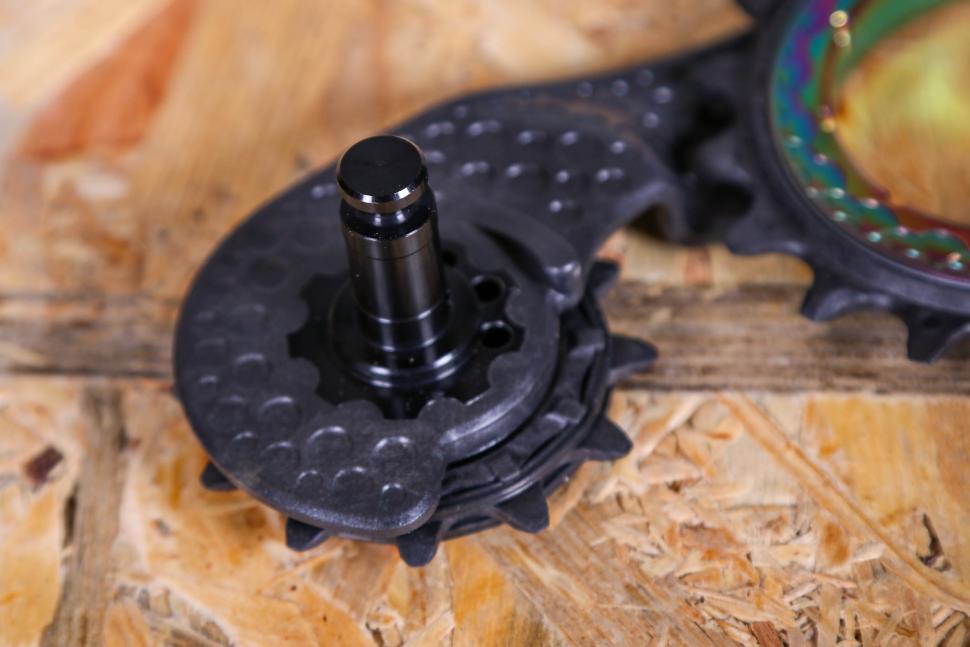
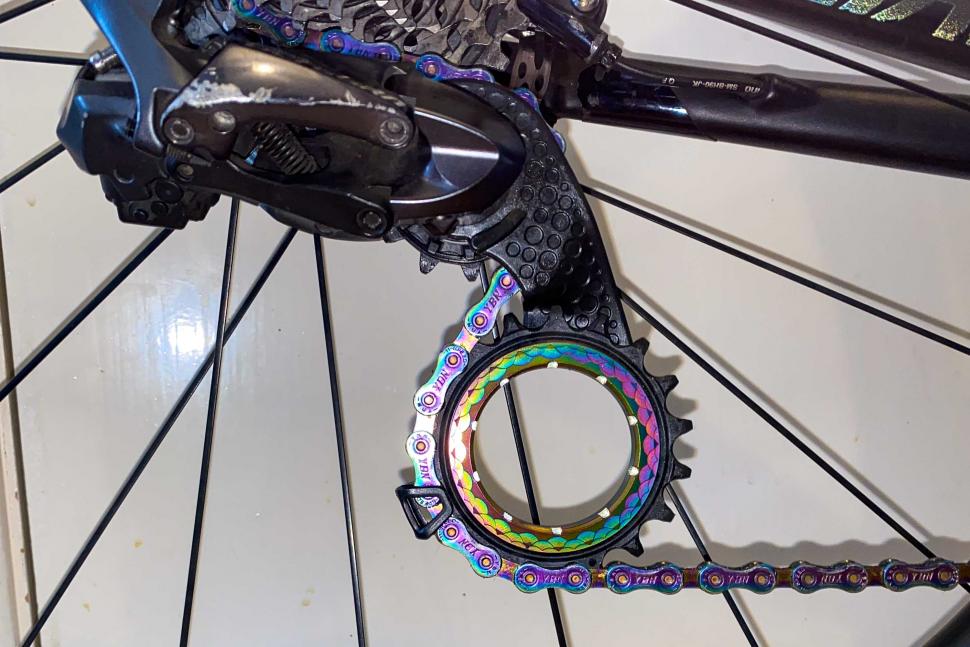
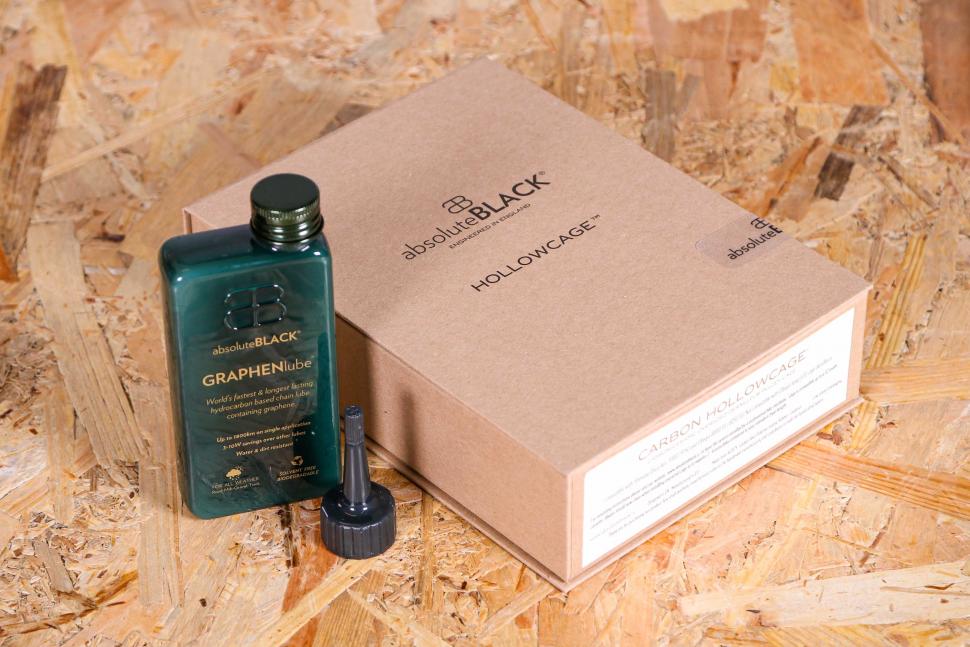

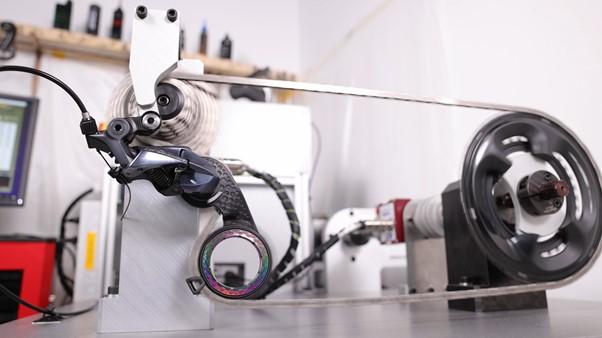


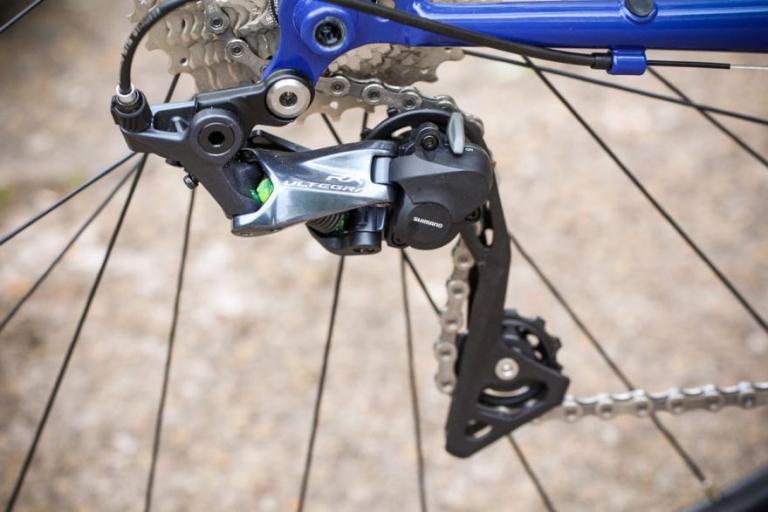

Add new comment
47 comments
If the noise off the pulley wheels are too loud for. People that they spend 500$ on this I hate to think of what they think of the noise from the servo motors from the DI2 system. Or the TV set radio and everyday life
It's like Lambos, Ferraris, MaClarens don't exist in your world. People buy this stuff because a market for it exists.
And the difference in sound of 12db is quite significant as the decibel scale, as the name implies, is logarithmic.
It was AB primary claim, and was found to be true, possibly much to the chagrin of the youtube sheeple. As for the price, if you don't want it, exercise your freedom of choice and don't buy it!
I fond this and the SL7 controversies to be highly amusing as they don't affect 99.9% of cyclists in the real world, but you wouldn't know it by the press it gets.
I couldn't waste money on that funny wedge that's supposed to increase pedalling efficiency, because it's only for SPD-SL pedals, and now I can't waste money on this because it only works with SS derailleurs. It's really not fair.
Your lucky
Nothing new about oversized jockey wheels, they've been around quite a while in various guises. If they offered a real net performance gain, I'm pretty sure the likes of Shimano, Campag and Sram would have picked up on them for original fit on high end drivetrains by now. (I believe Sram recently moved from 10, to 11 teeth on their jockey wheels, but that is hardly oversized) I will personally file alongside L shaped cranks, and those recently advertised undershoe wedges designed to increase power by holding the heel higher.
True real life vs a lab are two different things
6 out of 10 rating because it a conversation starter Any new part on a bike wil start a conversation This is just a scan product
Hambini slated this design. There are no seals to protect the bearings. The warranty doesn't cover damage from road debris ruining the bearings.
He took one apart and the bearing cages, seemed to be made of a hard type plastic, not ceramic.
At the price its being sold at for the minimal performance increase, I would expect platinum level warranty.
Bearing cages are generally made from PEEK, PTFE, POM or another inert type of plastic.
Cages manufactured out of ceramic would not be able to take any shock load, particularly at very thin sections
It was actually the races being crushed that was of interest. The cage in bearings is meant to keep the balls apart, not bear the radial or axial load of the bearing. Ceramic is supposed to be hard - the races were clearly not very hard or strong. There is some speculation in the Hambini video comments that the bearing used is a plastic 'infused with ceramic particles' or words along those lines. Possibly from a nautical application.
Our bearings are full ceramic. This means inner and outer race as well as balls are made of ceramic material (zirconium oxide for races and a different type of ceramic for the balls). This is the definition of "full ceramic" bearing in technical nomenclature as opposed to "hybrid ceramic bearing" where only the balls are of ceramic material. We use PEEK cage and seals.
Their advertising seems contradictory.
However you can watch Hambini's review here https://odysee.com/@hambini:9/AbsoluteBlackHollowcage:a
Absolute Black had his video review blocked on the YouTube version in the UK
The video in the link is completely misleading, it implies that the bearings we use have plastic races, which is simply not the case
Races used in an ultra thin, full ceramic bearing like ours, will exhibit certain degree of flexibility. Those races are made out of ceramic material only, we do not use "ceramic infused plastic"
Our bearings do have seals but unlike normal steel bearings, they are not completely neccessary. Full ceramic bearings can't be easily damaged by debris from the road. This is a known fact and many other manufacturers have been using such bearings in their pulleys for years, with great success.
Normal steel bearings need seals to protect them from rust (from water) - this is the single biggest problem steel bearing are exposed to, which affects their durability. Full ceramic bearings don't rust ,hence they don't have this issue and because they are very hard, they don't wear the same way as normal bearings. The durability of full ceramic bearing surpasses many times a regular bearing.
The bearing races in the Hambini short clip were not particularly hard looking - certainly they appeared more flexible (and therefore presumable less hard) than steel bearing races. They may not corrode but any contamination is going to cause wear or pitting on the races. The statement "full ceramic bearings can't be easily damaged by debris' requires some evidence please, particularly with regard this specific bearing. They bent like plastic so it is difficult to see how they would stand up well to contamination between balls and races. I believe the claim they won't rust for whatever that's worth, but I don't see how they wouldn't pit / wear grooves / become less efficient very quickly on account of being visibly flexible and presumably not very hard. Please post some measurements of hardness and lifetime wear performance of the specific bearing as compared to a quality steel bearing.
We think that we can all agree that "hard looking" or "being visibly flexible" is not a very accurate way of assessing material properties. Zirconia ceramic has hardness above 11Gpa. This material is well established in ceramic bearing manufacture, as well as other products, with decades of testing and real life applications. There are also many companies which have beeen using full ceramic bearings in their pulleys for many years (some even without seals). This type of bearing has been made for decades and has plenty of applications.
I think we can all agree the latest Hambini video shows your bearing races bending by hand and being scored with a craft knife.
I asked you for some data regarding the hardness of the material used in the races (not general claims about ceramic materials) and for lifetime wear performance of the bearing. You responded with neither.
In my opinion, it is very hard to take any of your claims about your product seriously.
I'm sorry, but that sounds like waffle talk. If grit particles get inside, the races will suffer wear, the balls cage will suffer wear aswell as the balls.
I like to understand how a brittle material like ceramic is flexible? Its either rigid or breaks under impact or twist forces.
You either have confidence in your product, so offer full 4 year warranty and cover all aspects or face scrutiny.. After all you're charging £500+ for a part.
Adding these get out clauses in warranty make the part for display purposes only
Every bearing needs maintenance from time to time, regardless of the material it has been made of. Neglecting this, can lead to premature wear in exactly the same way as neglecting engine oil change. Every bearing company has the same / very similar warranty conditions so there is nothing new here. Full ceramic bearings last significantly longer and require less frequent maintenance than steel ones. Zirconia ceramic has been used in bearings and other applications for decades and has well proven track record. It's known for its high hardness and durability. Bearings of this kind are successfully used by other manufacturers of pulley wheels and are known to last tens of thousands of kilometres, even without seals. They almost always outlast the pulley teeth. We understand that for some of you this may seem like a completely new type of bearing, but the fact is, it has been used for decades.
Easy to say, very hard to proof! Also it isn't aero, the huge hole negates all the aero gains that you think you have. Yes it looks cool but it is a cage that's hugely overpriced! Make this a €150-200 product without promising anything unreal and just sell it as a way to make your bike look cool and people will actually buy it!
Not commenting on wether or not they can be damaged, but the presence of road grit among the bearings seems likely to cost more watts than any savings the design can deliver.
Don't really car one way or the other as I wouldn't be spending £500 on part of a rear derailleur, when that money would pay for a full top of the range electronic derailleur.
How can a presumably poorly paid cycling journalist think £500 for a cycling trinket is in any way acceptable??? Fair enough if you're Michael Jackson or Connor McGregor and love spending money on sh1te......... Are your wages subsidised by Mummy and Daddy in Surrey???
He called them 'ludicrously expensive' and mentioned the 'rich boys' cafe run,' which doesn't seem to justify your outrage.
Huh? 3/5 — "quite good"?
For *what* exactly? It's not meaningfully lighter than the part it replaced, the bearing's draggy, and the aerodynamics claims are so much bullshit. The only concrete advantage mentioned in this review is that the reviewer thinks it looks good, and it's a tiny bit quieter, which is all very well, but it's FIVE HUNDRED QUID. You can quite literally get an entire, quite good bike for that. Or a very nice respray of your existing bike to make it look awesome.
road.cc, this is why readers accuse the cycling media of being bent
errrr the difference in sound is equivalent to you being in the room with a washing machine or an alarm clock, which in your esteemed estimation are a tiny bit different in terms of sound. as for the bearings being 'draggy' if I recall from reading AB's blurb they are designed to be that way and roll more freely when under load - so them not rolling in the wind tunnel test is fully explicable - if you bother to read their blurb.
as for your indignance for this company designing building and selling a product for the price of their choosing, thats freedom of choice, as is yours not to buy it.
thats a really silly statement, as my existing rear mech is nowehere near as loud as either an alarm clock or a washing machine. In fact barely discernable over the wind noise in my ears. Might be better on the turbo trainer perhaps.
dB is a log scale so the difference between 30 db (whispering) and 20db (leaves rustling) is nowhere near as significant as the difference between 70db (vacuum cleaner) and 80 db (alarm clock)
"I believe this is the main reason we haven't seen OSPW systems being used in the peloton"
You don't watch much pro cycling do you.
Sorry that's been changed, should have read that some not all teams use them rather than none.
Surely if oversized jockey wheels are better than standard-sized jockey wheels, then super-oversized jockey wheels must be even better than mere oversized jockey wheels?
I really want to see a manufacturers' 'arms race' of increasingly larger jockey wheels
And if 29" wheels are better than 16" and 20" wheels, surely 100" would be even better!
Pages